|
||||||||||
|
|
||||||||||
|
||||||||||
|
|
||||||||||
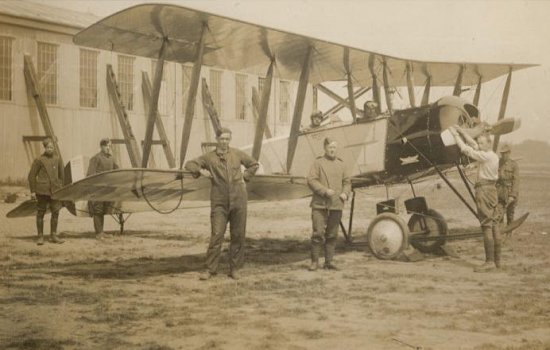
Attitudes about combat planes began to change with the outbreak of war in Europe. The scout aircraft used by both sides for reconnaissance soon started dogfighting to deny information to the enemy. Thus was born the first generation of fighter called the fighting scout. Most scout planes were two-seat aircraft with a pilot flying the plane and an observer who collected information. On early fighters, the observer was simply given a revolver, rifle, or even a hand grenade to attack enemy planes. The accuracy and range of such weapons was generally poor, however, and hitting a target moving in three dimensions like another plane was nearly impossible.
One of the most important weapons of the war was the machine gun that had a profound impact on the nature of ground battles. Pilots soon began trying to fit these powerful weapons to their planes, but successful integration proved a difficult proposition. Pilots and designers quickly concluded that the most effective gun position was just ahead of the cockpit allowing the pilot to fire the gun while aiming by pointing the plane's nose at the target. Not only did this installation assist in aiming, but it also made reloading the machine gun or clearing jammed rounds much easier. Unfortunately, this gun location was considered impossible on any plane with a tractor propeller, or a propeller at the front of the plane pulling it forward, since the rapidly fired ammunition rounds could easily damage or destroy the propeller blades.
To avoid this problem, the guns were instead often mounted on the top wing of a biplane and tilted at an angle to clear the propeller arc. Although this design eliminated propeller interference, it was very difficult for the pilot to fly, aim, and shoot at the same time. Reloading was also a challenge since the pilot would often have to stand up on his seat to maintain the guns while also trying to fly the aircraft.
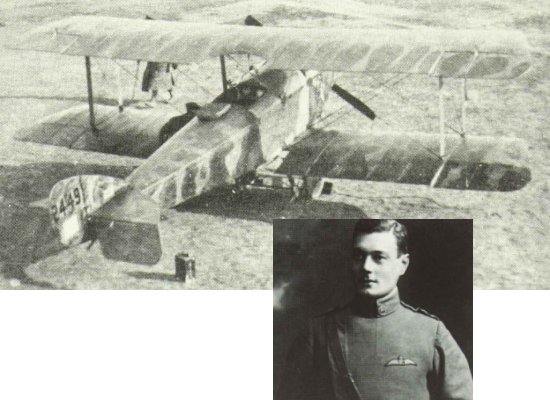
An excellent example of these difficulties comes from an English ace pilot named Louis Strange who experimented with a wing-mounted Lewis machine gun on his Martinsyde S.I biplane. After running out of rounds while engaging a German scout, Strange stood up to remove the ammunition drum that had jammed. As he tried to pry the drum loose, the aircraft stalled, flipped upside down, and started spinning towards the ground. Strange was flung out of the plane and found himself in a precarious position, now dangling below the upper wing of his inverted plane hanging on only by the very drum he had been trying to remove. Thankfully for Strange, the stubborn drum held its place as he swung his legs wildly back and forth to get his foot back into the cockpit. He succeeded in pulling himself back inside with just enough time to roll the plane over and pull up to avoid a crash. His thrashing had smashed the instrument panel and broken the seat, but Strange successfully returned to base and went on to survive the war.
Episodes like this, though comical, demonstrate the problems that made a forward-mounted gun impractical. Most fighters continued to rely on the rear observer to serve as gunner during aerial battles. These planes were generally fitted with one or two machine guns located on a swiveling mount behind the aft cockpit. The observer typically operated the guns from a standing position while using a series of straps to hold him in place during the aircraft's violent maneuvers in a dogfight. The first kill claimed by a machine gun came in October 1914 when a French observer/gunner aboard a Voisin III biplane used a Hotchkiss machine gun to shoot down a German Aviatik C-I reconnaissance plane.
The British, meanwhile, still rightly believed a forward-firing gun was the answer but could not find an ideal solution to avoid hitting the propeller. The Royal Air Force instead adopted pusher propeller designs, with the propeller in back of the cockpit pushing the plane forward, so the pilot could operate a forward-firing machine gun. Unfortunately, this solution was not entirely satisfactory because pusher prop designs did not perform or maneuver as well as fighters with tractor propellers.
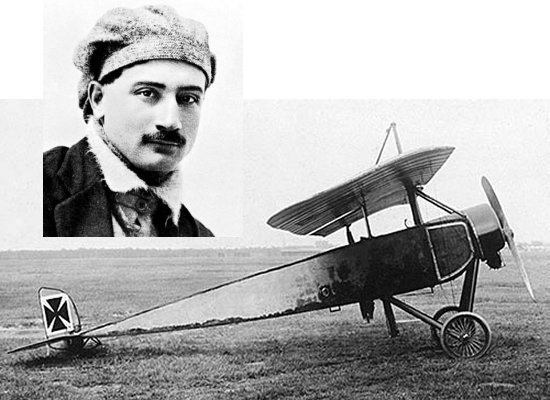
The French instead sought a different approach. A well-known aviator from before the war named Roland Garros approached aircraft designer Raymond Saulnier seeking a method of firing a Hotchkiss 8-mm machine gun through his plane's propeller disk. The idea they developed was to attach armored steel plates and triangular deflectors to the propeller blades. These triangular wedges pointed towards the pilot so that any bullets striking them would be deflected away from the blades but not ricochet back towards the cockpit. Garros tried these armored plates on his Morane-Saulnier Type L fighter in April 1915 and immediately claimed three kill within as many weeks. Though the French press proclaimed Garros a hero, the deflector wedges significantly reduced propeller performance and his success was short-lived. During a strafing attack, a shot by a defending rifleman struck the fuel line on his aircraft and Garros was forced down in enemy territory. Before Garros could set fire to the plane, he was captured and the novel armored propeller and gun installation were sent to Germany for inspection.
Dutch aircraft manufacturer Anthony Fokker, who was building aircraft at a factory in Germany, was given the French design and instructed to build something similar. Fokker was not impressed by the deflector plates, but they inspired him to return to another concept called the synchronization gear he had been investigating in 1914. More popularly known as the interrupter gear, the purpose of the synchronizing mechanism was to connect the gun trigger to the engine so the gun could not fire when a propeller blade was in the way. Fokker was not the first to study this concept and a Swiss engineer named Franz Schneider had already received a patent for a synchronizer in 1913. The previously mentioned French designer Raymond Saulnier had also built and tested a synchronization gear in April 1914, but none of these designs were mature enough for use in combat.
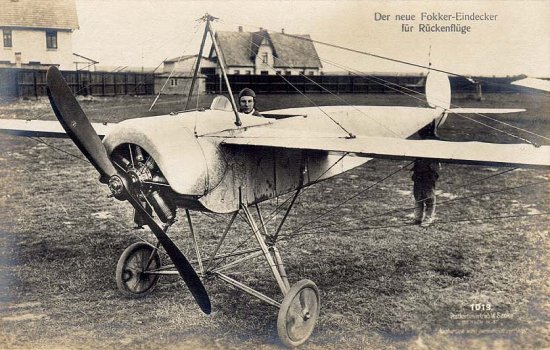
Fokker persisted, and within just a few days of receiving the French deflectors, his team had succeeded in creating a practical synchronizer gear. The device was used to connect Germany's new Parabellum lMG 14 machine gun to the engine of the Fokker A.III single-seat monoplane. Fokker had intended his Eindecker ("one decker," or "monoplane") to be a fighter, but the inability to mount an effective gun caused the Germans to use it for unarmed reconnaissance or communications duties. The development of a synchronization mechanism would allow his design to reach its full potential.
Fokker named his revolutionary invention the Zentralsteuerung, or "centralized control." At the heart of the synchronizer was a cam wheel that attached to and rotated with the propeller shaft. The device worked by first loading and cocking the gun, then pulling a handle to enable the trigger. This handle lowered a cam follower onto the cam wheel. When the follower was pushed upward by an asymmetric bulge in the cam, a rod was pushed back against a spring enabling the trigger to fire the gun. The bulge in the cam was aligned such that the trigger was only enabled when the propeller blades were out of the line of fire.
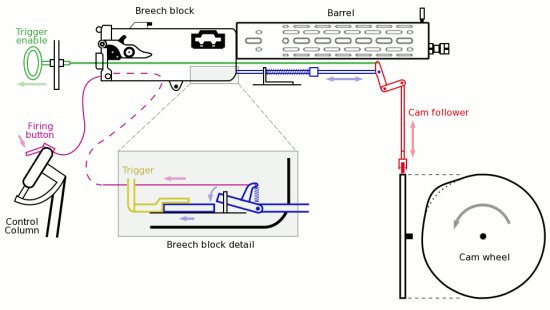
Despite Fokker's successful demonstrations of his gear during ground tests, German officers remained skeptical of its effectiveness. It was not until pilot Otto Parschau proved the capabilities of the new invention in May 1915 that doubts began to fade. Sufficiently impressed by the modified Eindecker, the German Inspektion der Fliegertruppen (Idflieg), or Inspectorate of Flying Troops, immediately placed orders for the Fokker E.I fighter equipped with the synchronization gear and began shipping it to the Western Front by the end of the month. The Fokker E.I was quickly joined by the improved E.II and E.III with better engines during the summer of 1915. The fighter probably claimed its first kill on 1 July when Kurt Wintgens forced a Morane-Saulnier Type L down in French territory, but this could not be confirmed. The first confirmed kill came on 1 August when Max Immelman shot down a British B.E.2c reconnaissance plane.
Just as Roland Garros had become a hero in France, both Immelman and Oswald Boelcke followed suit in the German press as the pair racked up one victory after another. Germany closely guarded its new invention and pilots were told to remain over friendly territory in case they were shot down to prevent the synchronization gear from being captured. Thanks to its development, the latter half of 1915 and the first half of 1916 became known as the "Fokker Scourge" when Germany dominated the skies over Western Europe. Although the Fokker E series was generally considered inferior to many Allied aircraft in terms of flight characteristics, the use of the synchronizing mechanism gave it a huge advantage over enemy planes. France was forced to abandon its daylight bombing campaign and Britain was losing an average of nearly two aircraft a day to the maneuverable Eindecker. Germany pressed its advantage in the spring of 1916 when a major offensive was launched against Verdun, and the Fokker fighters were used to decimate Allied observation planes and blind artillery spotters.
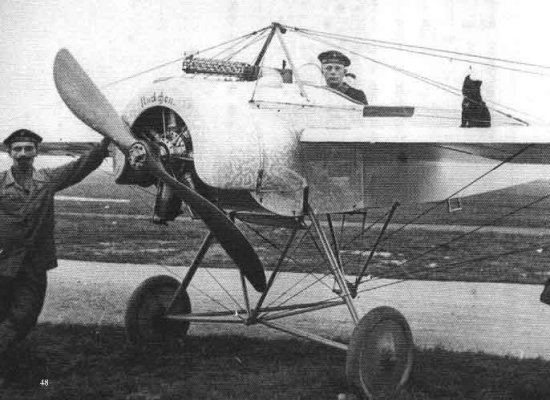
Technology was advancing rapidly however, and Germany gradually lost its air superiority by the fall of 1916. The Fokker E fell into enemy hands earlier in the year and the Allies began developing their own versions of the synchronizer. The first British fighter so equipped was the Sopwith 1½ Strutter introduced in April 1916 with a Ross synchronizer. Other British and French aircraft were also retrofitted with synchronized gun systems around the same time, but these were not perfect since the firing rate was too slow at low throttle and the linkages between the gun and engine often broke causing the pilot to shoot off his own propeller. Despite such difficulties, the Allies had caught up with Germany. The Fokker Scourge that had begun with Max Immelman's victory on 1 August 1915 symbolically came to a dramatic end with his death on 18 June 1916, although whether he was shot down by the Allies or accidentally shot away his own propeller remains unknown.
Technological superiority in the air continued to swing back and forth over the remainder of the war, particularly when Germany introduced the Albatros D.II in August 1916 and the Albatros D.III the following December. These advanced fighters turned the tide back in favor of the Luftwaffe during early 1917, but the growing quality and quantity of Allied fighters soon reversed the trend. By March, the British had introduced a new form of synchronizer based on hydraulics rather than mechanical linkages. Developed by Romanian inventor George Constantinescu, the Constantinescu synchronization gear (or "CC" gear) used impulses transmitted by a column of liquid to enable the gun trigger. This innovation was more reliable than earlier methods and also provided a faster rate of fire close to that of a normal machine gun and independent of engine revolutions. The CC gear remained standard on British fighters until the start of World War II.
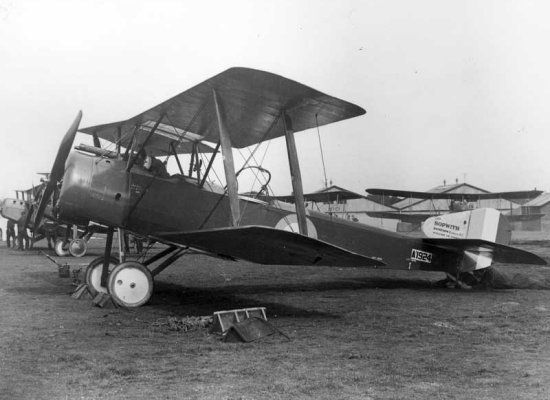
Germany still had a final surprise of its own, however, when the Fokker D.VII entered combat in mid-1918. This vastly superior fighter briefly led a second Fokker Scourge, but even it could not prevent Germany's inevitable defeat. Nevertheless, the new Fokker was so feared by the Allies that it was the only weapon specifically mentioned by name in the Treaty of Versailles that ended the war. Germany was forced to surrender all of these fighters to the Allied nations, and some remained in service into the 1930s.
Following the war, gun synchronizers remained an important element in fighter design and were applied to other types of combat aircraft as well. A major technological advancement came with the development of the gun turret used on larger planes like bombers. These turrets were designed to rotate and elevate through large angles to defend the planes against swarms of nimble fighters. To prevent the gun rounds from inadvertently striking the plane they were intended to defend, engineers developed an electrical system using solenoids to disable the guns at certain positions in the firing arc. When the guns entered a forbidden zone, electrical power was cut off to disable the trigger.
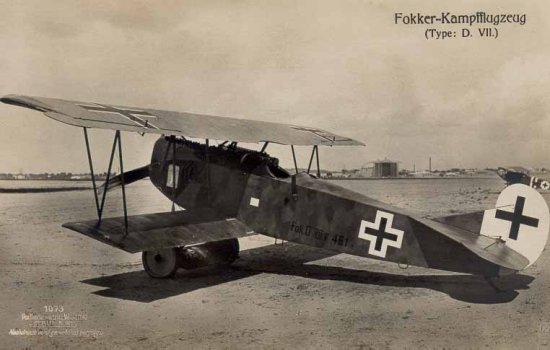
Although most fighters used early in World War II still employed guns firing through the propellers, the importance of synchronization systems faded as the war went on. The growing size and number of airborne guns made it impractical to carry them directly in front of the cockpit, and improvements in gunsights allowed the guns to be moved further from the pilot without loss of accuracy. The heavier armament was instead moved outboard into the spacious wings that were much stronger and more rigid than those used on the fragile planes of a generation before. In many ways, this approach was a return to the earliest attempts at fighter design since the guns were placed outside the propeller arc but angled inward to converge at a pre-determined point ahead of the nose. Wing-mounted guns became standard on most fighters during the war, although some German and Russian planes still retained fuselage-mounted guns in addition to those on the wings.
The final planes carrying a synchronizer mechanism to see combat were the Lavochkin La-11 and Yakovlev Yak-9 used by North Korea during the Korean War. Otherwise, the need for such a system was eliminated thanks to the emergence of jet-powered fighters that became dominant during that conflict. Machine guns remained standard armament on jet fighters for a time, typically mounted in the nose or inner wing, but these soon dwindled in importance as well with the development of the guided air-to-air missile.
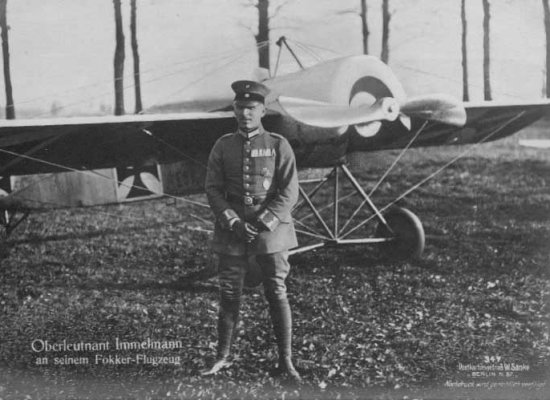
A final topic worth explanation is the term interrupter gear, often used interchangeably with synchronizer gear.
The subtle difference between these terms is that a gun fitted to an interrupter gear is always enabled until the
gear turns it off when some part of the plane is in the way. A synchronizer gear, on the other hand, only enables
the gun when there is no interference. In other words, the gun is normally active with an interrupter gear but
normally deactivated when using a synchronized gear. Despite several attempts, engineers were never able to
perfect an interrupter gear and all successful systems instead used the concept of synchronization.
- answer by Joe Yoon, 22 April 2007
Related Topics:
Read More Articles:


|
Aircraft | Design | Ask Us | Shop | Search |

|
|
| About Us | Contact Us | Copyright © 1997-2023 | |||
|
|
|||